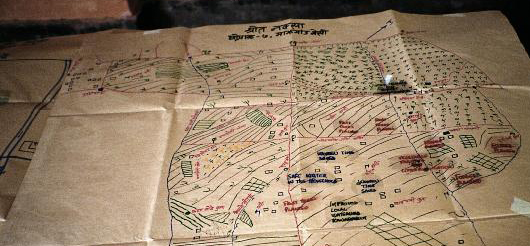What is land-use planning?
Integrated land-use planning (called “land-use planning” here) involves the allocation of land to different uses across a landscape in a way that balances economic, social and environmental values. Its purpose is to identify, in a given landscape, the combination of land uses that is best able to meet the needs of stakeholders while safeguarding resources for the future. Effective land-use planning provides direction on the manner in which land-use activities should take place and encourages synergies between different uses. It requires the coordination of planning and management across the (often) many sectors concerned with land use and land resources in a particular region.
In forestry, land-use planning involves the systematic assessment of forestland and its potential for various land uses, a consideration of the desirability of those land uses, and an understanding of economic, social and environmental conditions to enable the identification and adoption of the best land-use options in a forested (or partly forested) landscape. Land-use planning is driven by the need for (i) improved management and (ii) a different pattern of land use, as dictated by changing circumstances.
Benefits of land-use planning
Land-use planning is often carried out in a highly polarized public context in which decisions on land allocation and use are a source of conflict and tension. Land-use planning can help manage such conflicts, ease tensions, and bring about the more effective and efficient use of land and its natural resources. By examining all land uses in an integrated manner, land-use planning identifies the most efficient tradeoffs between land-use options and links social and economic development with environmental protection and enhancement, thus helping to achieve sustainable land management.
When carried out effectively, land-use planning increases certainty for stakeholders. For example, it can help assure the timber industry of the long-term availability of timber resources so it can invest capital with confidence.
Scale and regulatory framework
Land-use planning can be carried out at different scales, such as local, landscape, subnational, national or regional. Land-use planning tends to be strategic at larger scales and more operational at the local or landscape scale. Land-use planning generally takes place within a framework of laws, policies and customary norms that guide the uses to which forestland may be allocated.
Participation and goals
Until recently, forest-related land-use planning mostly took a top-down, technocratic approach that paid little attention to wider forest values or the interests of the full suite of stakeholders. In many countries now, however, growing environmental awareness and increasing acceptance of participatory democracy in forest decision-making have led to the greater use of multistakeholder mechanisms in planning and managing forest resources.
Despite the increased involvement of various stakeholders, women are still often excluded in the planning process. Land-use planning affects women deeply. Whereas men consider the forest in terms of commercial possibilities, women see it as a source of basic domestic needs. Women rely on forests constantly for their livelihoods, and the resources they collect are different from those of men. Moreover, it is unlikely that they have any land rights or handle power positions. If women are not included in the land-use planning, their needs may not be addressed properly and the products they rely on may not be recognized as essential by men landowners or planners. This could have severe consequence for women and girls such as scarcity of food and medicinal plants, increase of workload with a consequential loss of time for other activities (e.g. girls are not able to go to school), and more risks for their safety if they need to travel long distances.
Key stakeholder groups should agree on the goals of a land-use planning exercise at its commencement. These agreed goals will provide reference points for future decisions on land allocations.
Activities that are common to most land-use planning exercises are:
- assessing the present and future needs of stakeholders and systematically evaluating the capacity of the land to supply them;
- identifying and resolving conflicts between competing uses, the needs of individuals and those of the community, and the needs of the present generation and future generations;
- seeking sustainable options and choosing those that best meet identified needs and will contribute to agreed goals; and
- allocating land to a range of uses to bring about desired changes.
The process of land-use planning is iterative and continuous. Any land-use plan should be able to be renegotiated to take into account new information and changing circumstances and goals.




